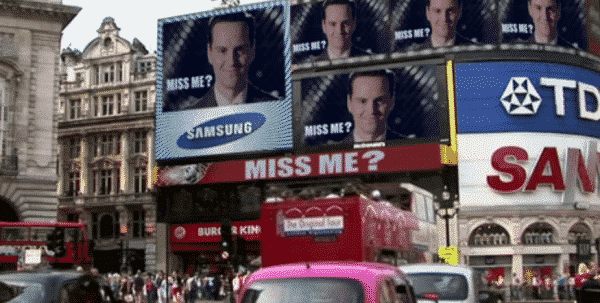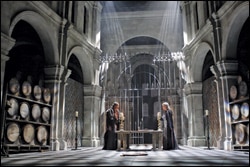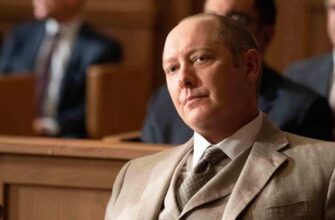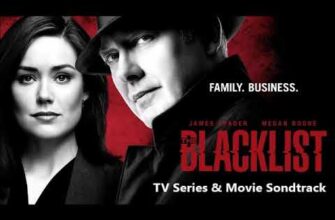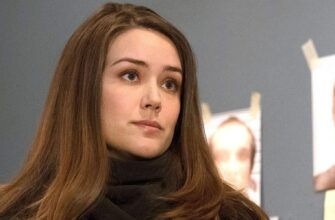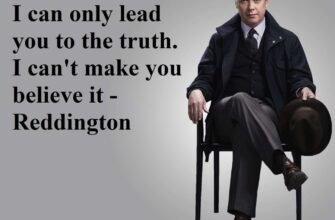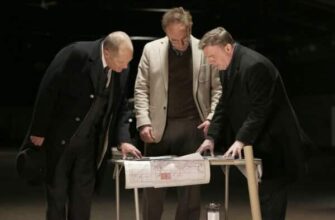Warning: Spoiler Alert (and references to previous episodes)
The cold open of this wonderful one-off is literally an exact parallel to the evolution of the story told in the first episode of the first season of Sherlock. Watson’s experience on the battlefield, his inquiry to a living arrangement, his first meeting of Sherlock Holmes, all of it. A pleasant head nod to the episodes that came before, setting the visual stage for this particular episode. The 1895 Sherlock and Watson. Even down to the young boy carrying their bags up to the flat, is the same boy Sherlock coaxed into playing ring bearer in the Wedding episode “The Last Vow”.
Inside the flat at 221B Baker St, Mrs. Hudson neglects to mention that a prospective client stands waiting in Sherlock’s living space. With a title like “Abominable Bride” one is inclined to believe the woman standing in the middle of the floor completely covered in black lace must be the bride in question. She is a bride, just not that bride. The woman is Mary Watson. Staging an elaborate ploy to see her husband. Sherlock, trying his best to ignore them, begins to monologue about solving an older case in order to solve the case in the forefront.
Lestrade stands outside the door looming. Sherlock invites him in before seeing that it is indeed Lestrade. Lestrade in this episode resembles a less respected version of himself. The not so in control, almost idiot version of himself. Curious considering this is the Lestrade that is more identifiable to the original book series and less so to the contemporary “Sherlock”. More curious still would be the notion that this is the Lestrade that Sherlock sees in his own mind and less of the actual living, breathing Lestrade we are accustomed to.
Lestrade appears to be there for Sherlock’s Scotch. Upon further review, Lestrade is actually there because of a case. A mysterious case of a woman. A bride, if you will, who killed her husband in front of witnesses after committing suicide a few hours previous. Mrs. Rigaletti was seen discharging rounds from two revolvers from a balcony down to the street and pedestrians below. Many men in the street clearly watched this woman place the barrel of one of her revolvers in her mouth and consequently blow the back of her head all over the curtain behind her. Then a few hours later, she steps out of a carriage and killer her husband with two shots from a shotgun. Again, with plenty of witnesses.
John Watson: Extraordinary.
Mary Watson: Impossible.
Sherlock: Superb. Suicide, street theater murder by corpse, Lestrade, you’re spoiling us. Watson, your hat and coat.
John Watson: Where are we going?
Sherlock: The morgue, there isn’t a moment to lose. Which one can so rarely say of the morgue.
John Watson: One more thing. Tweeds in the morgue?
Sherlock: Needs must when the devil is driving.
Before Lestrade can depart the flat, Mary blurts out that she is part of a campaign. A campaign for women’s right to vote, something not granted in the late 1800s. Lestrade idiotically asks if she is for or against extending the right to vote to women. Mary does not appreciate his need for clarification. A moment later, Mrs. Hudson hands Mary a telegram addressed to Mary. The message pleases her and has the letter “M” printed on the front. Previous exposure to the series has me convinced the M is for Mycroft.
Sherlock and Watson make their way to the morgue. The mortician arrives and is all too displeased to find Sherlock there. This mortician looks very familiar. It took longer than it should’ve to identify that the mortician is Molly Hooper dressed as a man. Molly’s role typically in the series relates to her job in a morgue. The difference here being that Molly in 2016 can easily succeed at her job as a woman. The same is not true in London in 1895. Sherlock becomes almost enraged at Watson’s notion that the answer to the riddle at hand is that the deceased bride before them must’ve had a twin. “IT’S NEVER TWINS!”
Sherlock: Gun in the mouth. Bullet through the brain. Back of the head, blown clean off. How could he survive?
John: She, you mean?
Sherlock: I’m sorry…?
John: Not he, she.
Sherlock: Yes of course.
(A deliberate reference to the apparent death of Moriarty from the in line series)
Before they both depart Molly takes a shot at Watson as the unobservant lap dog to Sherlock Holmes. He stops short, turns and explains that he is observant at times just as Sherlock is blind in others. Watson looks Molly over calmly. “Amazing what one has to do to get ahead in a man’s world.”
Sherlock keeps referring to the depth of the case and how he must go deeper. Putting that aside, Sherlock paces before a seated Lestrade going on about anything that is not Ghost Bride related. Mid sentence, Sherlock interrupts Lestrade to inform him that he has already solved the case. In short, the four murders that followed were all the work of copycats. The media coverage of the Abominable Bride has created cover for other women to kill their abusive husbands and the public would chalk it up to a Ghost Bride.
In an attempt to create realism to the time period in question, we get a scene with John Watson and his housekeeper. We get a glimpse into that male privilege that governed life and behavior for most during this time. Watson belittling and condescending towards his housekeeper. Then essentially telling her that she will be in trouble for her comments and attitude when John has a chance to talk to Mary about it as, apparently, the men of the time would simply inform on the help to his wife so his wife could take care of it.
Holmes and Watson meet with the elder Holmes. Mycroft is visibly and remarkably fatter. I don’t mean he put on a few pounds. I’m talking Eddie Murphy donning the fat suit to play Sherman Klump in The Nutty Professor visibly fatter. There we see the Sherlock/Mycroft tango. Sherlock probing for more information and Mycroft refusing to provide it. Mycroft will send a woman and Sherlock is to take her case, with little to no more helpful information provided.
Mycroft: Our way of life is under threat from an invisible enemy. One that hovers at our elbow on a daily basis. These enemies are everywhere. Undetected. And Unstoppable.
… …
Watson: But these enemies, how do we defeat them if you won’t tell us about them?
Mycroft: We don’t defeat them. We must certainly lose to them.
Watson: Why?
Mycroft: Because they are right and we are wrong.
The woman with the case is concerned for her husband’s welfare. He received and envelope and instantly turned ghost white. She takes the small envelope and empties the contents into her hand. 5 orange pips (orange seeds). She laughs while her husband does not. The pips mean death. More importantly the ‘5 orange pips’ is a reference to easily one of the top 5 if not top 3 most celebrated Sherlock Holmes stories from the book series.
Days later, the woman wakes to find her husband staring out the window. He sees the bride, his wife does not. Later still she finds her husband lost in the front garden staring at the image of the bride. After he utters the bride’s identity. The bride advances and before lifting her veil says he will die this night. She begins to lift her veil and Eustace passes out.
After hearing the account of the last few days and discovering that Eustace is in fact still alive, Sherlock begins to unearth a plan. Eustace is to be used as bait. Meanwhile, Mary appears with Mycroft as predicted. She is to not let Sherlock or John know she is working for him. An ominous moment but not out of the realm of logic as I am beginning to make some deductions on my own.
During their late night stake out, Watson tries to breach a personal conversation and Sherlock rebuffs at every turn. Even going so far as to suggest that nothing ‘made him this way’, he made him this way in regards to his view on anything emotional. Including the impulse and need for human ‘contact’. Their conversation is interrupted at the sight of what appears to be the ghostly representation of the Rigaletti bride seemingly floating in the distance.
Watson: What do we do?
Sherlock: …Why don’t we have a chat?
The image gradually retreats as a man’s screams are heard and followed by the sound of broken glass. Sherlock demands that Watson stay put despite Watson’s claims that the sounds came from the other side of the house. Sherlock pursues and is met by the Mrs. in tears reminding him that he promised to keep Eustace safe. Watson moves from his position, gun at the ready. Sherlock finds Eustace with a metal object thrust through his chest. The ghost appears behind Watson. He turns slowly, sees her and splits. He runs into Sherlock who is dramatically displeased that Watson abandoned his post. Making it very clear that Watson’s claims cannot possibly be accepted.
Watson: I saw her. I saw the ghost.
Sherlock: THERE ARE NO GHOSTS!
Sherlock continues on now in Lestrade’s presence about how each he and Watson are culpable for the shambles the case currently finds itself. Going on about how there is only one suspect and they might as well have left a note. Lestrade interjects that the assailant did leave a note. Sherlock has moved on the issue of a second broken window when he realizes what Lestrade just said. The killer left a note. A note that Sherlock is adamant, wasn’t there before.
We immediately fall back into a dream sequence between Holmes and Holmes. Mycroft is holding a small tag or note that reads “Miss Me”. A clear and obvious reference to how season 3 ended. Moriarty is dead not unlike the Rigaletti Bride is dead, by blowing his brains through the back of his head. Yet, there it was, the image of James Moriarty and the phrase, “Miss Me” plastered all over London on anything with a screen.
In this dream sequence, Sherlock is transfixed on a painting on the adjacent wall that comes alive. The image of a waterfall. That is an important reference as well. Sherlock turns his attention to fat Mycroft asking if he’s gained weight. They both are smart enough to know that is not likely, yet there he is…larger. Mycroft confirms that Sherlock is deep, much deeper than he knows. Then there is the question of a list. Has Sherlock created a list? Sherlock turns and produces a list, folded of course.
Sherlock turns his attention yet again. This time to Moriarty. Despite is status of you know, being dead and all, Sherlock is certain Moriarty is trying to distract him. Mycroft then says something very curious. “He’s the crack in the lens, the fly in the ointment, (he slows his meter) the virus in the data”. Virus in the data. This world we’ve been in doesn’t utilize modern electricity much less computers, even less still the common understanding of the relationship between a computer virus and the computer data it corrupts. There is a very widely understood concept in the Sherlock fandom that is trying to creep its way in. If it’s what they are doing, I will be impressed. For fear of ruining the moment, I’ll let that lie and come back to it if I’m right. Mycroft feeds the theory that Moriarty may have in fact risen from the dead as he looks up to the alive waterfall image on the wall.
For those new to Sherlock, there is a genius device the show runners use to give a visual representation to Sherlock’s thought process. If comes in the form of computer or cell phone text floating in front of him on the screen. Giving proper attention to the period piece that this one-off feels to be, that device is replaced by floating pieces of newspaper articles that he can grab out of the air and release floating around him. It’s actually pretty clever. Lestrade and Mrs. Hudson look on from the doorway while Sherlock meditates. Mrs. Hudson eluding to the idea that he’s been there meditating for two days now.
Lestrade: What do you think he’s doing?
Mrs. Hudson: He said he’s waiting.
Lestrade: For what?
Mrs. Hudson: The devil.
Lestrade leaves and Mrs. Hudson closes the door. As if he was waiting for both of those things to happen, Sherlock removes a newspaper to reveal a small syringe in a silk lined case not much bigger than the syringe. As viewers suck all of the air out of the respective room they’re in.
The next dream sequence finds Sherlock squaring off face to face with the embodiment of the recently deceased Moriarty. This is vintage Moriarty. Deliciously, tangibly just this side of crazy. Including but not limited to Moriarty going off on a tangent about the properties of dust and how much human skin is found there. Even playful with his gun which leads to both men pointing their guns at each other. Moriarty even maintains that Sherlock has no interest in the Rigaletti case or Eustace. He is only interested in the how.
Moriarty draws a comparison to the elephant in the room. The Rigaletti case and the how Sherlock seeks is eerily similar to another case that either does or will be the focus of Sherlock’s attention in season 4. “It’s on the tip of my tongue” as Moriarty uses the barrel of his gun to rub against his tongue and eventually leads to the barrel of the gun sitting in his mouth.
Sherlock: For the sake of Mrs. Hudson’s wallpaper I must remind you that one false move with your finger and you will be D—ead.
Moriarty: Dead is the new sexy.
Moriarty pulls the trigger, blood spatter is seen. What is also seen is Moriarty standing there just as alive as he was, shaking it off as if a bullet to the brain is no more life threatening than a slap to the face.
Sherlock: How are you alive?
Moriarty: Be honest, is it noticeable? (Referring the hole now in the back of his head)
The earth seems to shatter around these two nemeses, as Moriarty drops a very well-known and widely used in television quote, It’s not the fall that kills you, it’s never the fall, it’s the landing. Which refers to the quote, “It’s not the fall that kills you, it’s the sudden stop at the end”. Now two of my favorite shows have used some variation of this line in very different ways. As the tremors get bigger, we find ourselves thrust back into present day. At the end of season 3, Sherlock is exiled and at this very moment, the plane taking him to his exile lands…back where it took off from.
Giving no attention to the notion that he landed after a four-minute flight, Sherlock demands to go back. To Mycroft, John and Mary, Sherlock seems to be rambling until he utters a very important phrase. He was in his “mind palace”. The exact reference I was hinting to some 8 or 9 paragraphs ago. The entire case, Rigaletti, Eustace, 1895, all of it, was an exercise Sherlock completely conjured in his mind palace!
Mycroft is disturbed to hear the mind palace reference. John tries to curtail his reaction by confirming that the mind palace is real, John has seen it happen. Then Mycroft asks about the list, making it clear to all that the mind palace or what that implies is not new information. It is becoming increasingly clear that this may actually be the first time the show runners have slapped us in the face with the notion that Sherlock’s ‘Mind Palace’ is a literal marker for when Sherlock is high.
Despite Sherlock’s insatiable need to get back to his mind palace is interrupted by Mycroft’s concern and steadfast support. “I was there for you before, I’ll be there for you again. I’ll always be there for you”. Sherlock wakes to the sound of Watson asking if it were morphine or cocaine? In the mind palace as in present day, Watson is not supportive of Sherlock’s belief that he is an occasional user and not an addict that uses to enhance his thought process.
Sherlock: Would like to try it?
Watson: No. But I would like to find every ounce of the stuff in your possession and pour it out of the window.
Sherlock: I should be inclined to stop you.
Watson: Then you should be reminded quite forcefully which one of us is a soldier and which of us, a drug addict.
Sherlock: You are not a soldier, you’re a doctor.
Watson: I’m an Army doctor which means I can break every bone in your body while naming them.
Sherlock receives a telegram that changes Sherlock’s demeanor instantly. It’s Mary. The two make their way to a church of sorts where they meet with Mary. There is a strong sense, a cult like sense that whatever is going on here extends beyond the Rigaletti Bride or Eustace. Mycroft, as predicted, secured Mary’s services. Curious considering the vague nature of Mycroft’s background on this case. Mary believes Mrs. Rigaletti had help from her friends. And as is the nature of a well told Sherlock Holmes mystery, the tumblers should begin to fall into place.
Down below the trio walks in on what appears to be a séance in klan attire. Sherlock strikes a gong to get everyone’s attention. He walks through the crowd of pointy hoods. Then Sherlock in dramatic fashion decides to go through the events in order. First, the ‘bride’ grabs everyone’s attention with the double fisted revolver charade. She placed one revolver in her mouth while firing the other into the ground. An accomplice sprays blood on the curtains behind her creating the illusion of suicide. She falls back to sell it. She gets up and leaves as the accomplice leaves a similarly dressed and looking corpse in her place.
The bride slips out the back door undetected. Using a cabbie familiar with her, she has her husband intercepted. A little makeup and a good acting job and we have the specter of a jilted dead woman effectively sold. And consequently the murder of Mr. Rigaletti was a simple human on human homicide. Then in order to finalize this, the real Mrs. Rigaletti would have to be dead. She gives permission for someone else to shoot her in a similar fashion, then replace her body with the fake, and thus tie up any loose ends.
Why would she go to such lengths? Short answer? Every war has martyrs. And this most certainly is a war. Half of the human race against the other half. I mentioned figurative tumblers. It should be increasingly clear at this point. Mary said she is a part of a cause. Mycroft said this was a fight ‘we’ must lose because they are right and we are wrong. John’s housekeeper even hinted to such an issue with his condescension and the lack of her presence in his stories. And finally, another John Watson detail. When Mycroft was vague about their enemy, John rattled off a number of groups from opposing nations to political groups. But it was the last one he mentioned that was curious. Curious still that upon hearing that name, Mycroft did not deny their involvement, he just moved on. “Suffragists”. The enemy the fight and the war they must lose is woman and their right to vote. “The invisible army hovering at our elbows”.
All the people wearing hoods remove them. All of them are women. Mr. Rigaletti was just a prime example of male privilege of the time. He promised his would be wife everything including estate and position. When he was done with her he cut her loose. And there is the motivation for a secret society of women to turn the perception of power and control, if only to make a larger point. The rest of the case’s details are typical smoke and mirrors. Once we believed the ghost bride was real, almost any bride would do. A collection of “women we have betrayed”. Right about the time Sherlock’s grand standing comes to a crescendo pointing to the only logical suspect, the bride in question arrives across from Sherlock. The bride lifts her veil to reveal that she is actually…Moriarty!
Moriarty: Peek-a-boo
Sherlock: Not you, it can’t be you.
Moriarty: Come on, be serious. Costumes, the gong. Speaking as a criminal mastermind, we don’t really have gongs. Or have special outfits. Is this silly enough for you yet? Gothic enough? Mad enough? Even for you? It doesn’t make sense Sherlock because none of it’s real. It’s all in your mind. You’re dreaming.
Sherlock, back in present day, frantically demands to find where the bride was buried. They find the location and Sherlock goes all “Stir of Echoes” digging up the casket. The soft whisper of “Don’t forget me can be heard as a skeleton arm slowly rises and points eventually causing the skeleton to fall over onto Sherlock. He snaps out of it to wake in rocky terrain and a wet mist covering him. He woke up on the wall of the waterfall.
Moriarty: Congratulations Sherlock, you’ll be the first man in history to be buried in his own mind palace.
Moriarty may be physically dead in the natural world, but he will never die in Sherlock’s mind. The Napoleon of Crime. He continues that Sherlock once referred to his mind as a hard drive, well in this case, Moriarty is the virus. Here is the final standoff. This is how they end. There is a nice exchange, a moment of mutual respect that is abruptly altered when Sherlock suggests that in this realm, Moriarty is going into the water. A literal fist fight begins and eventually Moriarty gains the upper hand. Now its Moriarty monologues about being the embodiment of Sherlock’s weakness. Both men stand, locked together, Moriarty suggesting they go over together.
Watson (clears his throat and cocks the hammer on his revolver): Professor, if you wouldn’t mind stepping away from my friend, I do believe he finds your attention a shade annoying.
Moriarty: That’s not fair, there’s two of you.
Watson: There’s always two of us don’t you read The Strand?
The two go on with Moriarty on his knees, hands over his head. They exchange pleasantries even though both men know that this John Watson and this Moriarty aren’t real. John tells Sherlock it’s time to wake up. He’s a storyteller. He knows when he’s in one. One off John even asks about the real John and Sherlock is sincerely complimentary. Then Moriarty says something that a large chunk of the fandom has been asking for a few years now. Then John Watson kicks him over edge.
Moriarty: Why don’t the two of you elope for God’s sake.
This still leave the matter of waking the real Sherlock up. He stands on the edge of the cliff preparing to jump. As he always survives the fall. Remember its the landing (that he won’t experience) that kills you. He tosses his hat into the water. Then they set up for the most misquoted line in maybe the history of television, books or the adaptation between the two. Something that has been confirmed to me that was never used in the books and is something that was added later, but assumed part of the books.
Sherlock: Between you and me Watson, I always survive the fall.
Watson: But how?
Sherlock: Elementary my dear Watson
Sherlock wakes up as predicted in his seat on the plane with John, Mary, and Mycroft standing over him. Sherlock in Sherlock fashion looks past the obvious concern and asserts he must return to Baker Street as Moriarty is back. Watson desperately wants him to explain.
Watson: Moriarty is alive then?
Sherlock: I never said he was alive, I said he was back.
Mary: So he’s dead?
Sherlock: Of course he’s dead, he blew his brains out. No one survives that. I just went through an overdose to prove it. Moriarty is dead, no question. But more importantly, I know exactly what he’s going to do next.
Until next time, “The Game Is Never Over”. And remember to check back often to NotJustAnotherTVSite.com for all of your Sherlock coverage.
